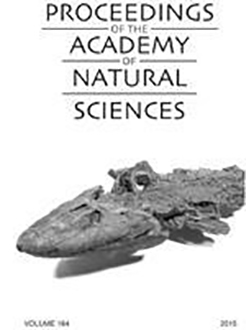Loricaria thomasi, new species, is described from large and predominantly whitewater river channels draining into the middle río Orinoco. The new species is distinguished from all nominal congeners by its uniquely developed buccal tuft, a medial cluster of 25–29 simple, elongate papillae supported by a fleshy protuberance from the anterior roof of the buccal cavity, internal to premaxillae. Adult specimens of L. thomasi are distinguished from nominal congeners by having dorsal surfaces of head and anterior body relatively smooth, lacking distinct ridges or crests (vs. paired, longitudinal, odontode ridges conspicuous on supraoccipital and predorsal plates). Loricaria thomasi apparently feeds on nonbiting midge larvae (Chironomidae) in the subfamilies Chironominae (Cryptochironomus, Pelomus) and Tanypodinae (Coelotanypus) in the río Guariquito near its confluence with the Orinoco.
BioOne.org will be down briefly for maintenance on 17 December 2024 between 18:00-22:00 Pacific Time US. We apologize for any inconvenience.
How to translate text using browser tools
9 April 2024
Description of a new species of Loricaria Linnaeus 1758 (Siluriformes: Loricariidae) from the Orinoco Basin
Francisco Provenzano Rizzi,
Mark H. Sabaj
ACCESS THE FULL ARTICLE

Proceedings of the Academy of Natural Sciences of Philadelphia
Vol. 168 • No. 1
January 2023
Vol. 168 • No. 1
January 2023
chironomid feeding
Coelotanypus
Cryptochironomus
Loricariinae
Pelomus
suckermouth armored catfish





